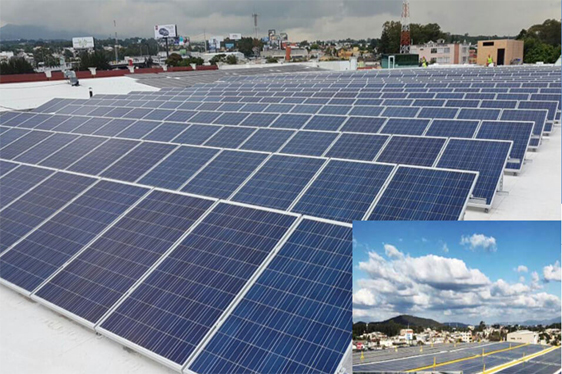Dec 08, 2020
Photovoltaic power generation is based on the principle of the photovoltaic effect, using solar cells to convert sunlight directly into electricity. It can be used independently or in a grid-connected system,
Photovoltaic power generation systems are composed of three main components: solar panels, controllers, and inverters, and involve mechanical components. Theoretically, photovoltaic technology can be used in any situation where power is needed.

The solar panel is the core of the solar power system, the role of solar panels is to convert the sun's light energy into electrical energy, the output of direct current stored in the battery. The solar panel is one of the most important components of the solar power system, and its conversion rate and the service life is an important factor in determining whether the solar cell is worth using. Module design: Designed in accordance with IEC: 1215:1993, 36 or 72 polycrystalline silicon solar cells are connected in series to form various types of 12V and 24V modules. The modules can be used in a variety of household PV systems, independent PV plants, and grid-connected PV plants.
The most basic component of solar photovoltaic power generation is the solar cell (cell), there is monocrystalline silicon, polycrystalline silicon, amorphous silicon, and thin-film cells. Monocrystalline and polycrystalline cells are the most used, while amorphous cells are used for small systems and computer auxiliary power supplies.
Home power generation system generally consists of photovoltaic arrays of solar modules, solar charge and discharge controllers, battery banks, off-grid inverters, DC loads and AC loads, etc.. If the output power is 220V or 110V AC, an inverter is also required. The PV array converts solar energy into electrical energy in the presence of light, and supplies power to the load through the solar charge/discharge controller while charging the battery bank; in the absence of light, the battery bank supplies power to the DC load through the solar charge/discharge controller, while the battery also supplies power directly to the independent inverter, which inverts into AC power and supplies power to the AC load.
1.Off-grid power generation system. It is mainly composed of solar modules, controllers, and batteries, and is also equipped with an AC inverter to power the AC load.
2.The grid-connected power generation system is the solar modules that generate DC power through the grid-connected inverter into compliance with the requirements of the utility grid, which is directly connected to the public power grid. The grid-connected power generation system has a centralized large-scale grid-connected power station is generally a national power station, the main feature is the power generated by the direct transmission to the grid, the grid unified deployment of power supply to users. However, this kind of power station is difficult to develop due to its large investment, long construction period, and large area. Decentralized small-scale grid-connected power generation systems, especially building-integrated PV power generation systems, are the mainstream of grid-connected power generation due to their advantages of small investment, fast construction, small footprint, and strong policy support.
How Do Solar Panels Help The Environment?
Nov. 23, 2021
Follow Us
Navigation